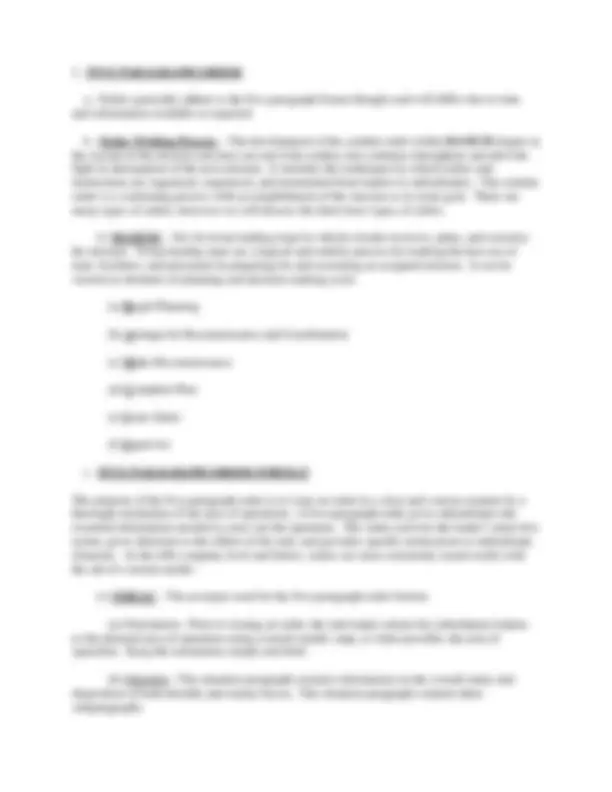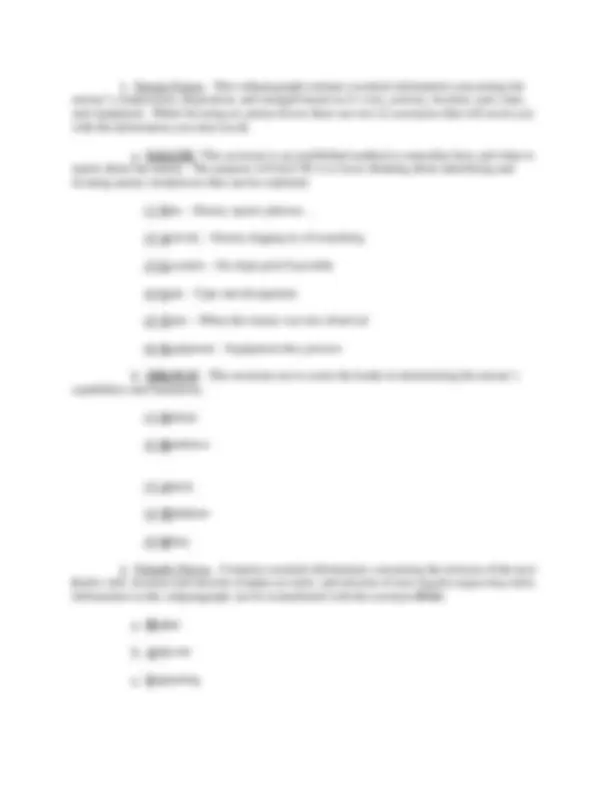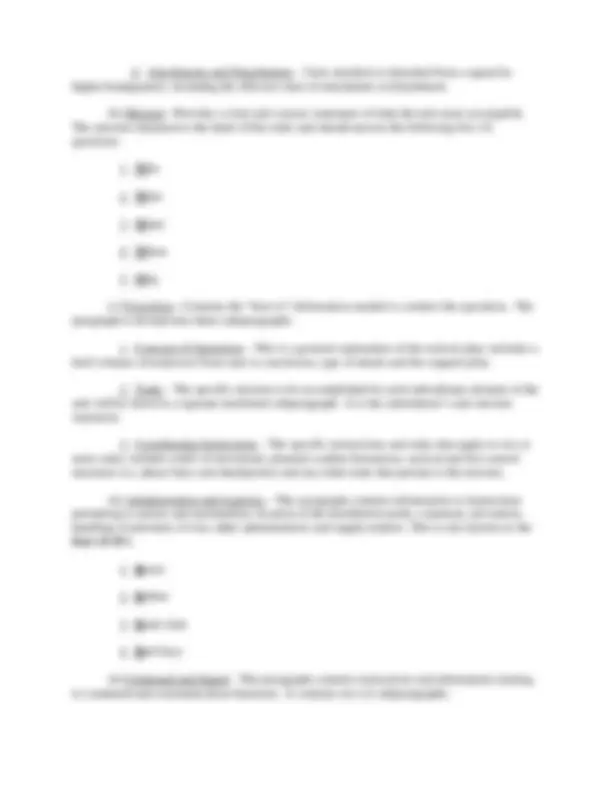





Study with the several resources on Docsity

Earn points by helping other students or get them with a premium plan


Prepare for your exams
Study with the several resources on Docsity

Earn points to download
Earn points by helping other students or get them with a premium plan
Community
Ask the community for help and clear up your study doubts
Discover the best universities in your country according to Docsity users
Free resources
Download our free guides on studying techniques, anxiety management strategies, and thesis advice from Docsity tutors
An in-depth explanation of warning orders, five-paragraph orders, and fragmentation orders in the context of the United States Marine Corps. It covers the components, writing process, and examples of each order type. Students of military science, tactics, and strategy will find this information valuable for understanding military operations and communication.
Typology: Study notes
1 / 7

This page cannot be seen from the preview
Don't miss anything!




Camp Lejeune, NC 28542-
ENABLING LEARNING OBJECTIVE(S)
a. Warning Order - Warning orders give advance notice of an order or action.
(1) Purpose - to provide subordinates with maximum time available to prepare for an operation or action. Warning orders are either oral or written and must adhere as closely as possible at battalion and company level.
(2) Information - The format below contains the minimum items of information for inclusion in the warning order.
(a) Situation – A brief statement of the situation.
(b) Mission – Mission of the patrol.
(c) General Instructions
(d) Specific Instructions
a. SALUTE This acronym is an established method to remember how and what to report about the enemy. The purpose of SALUTE is to focus thinking about identifying and locating enemy weaknesses that can be exploited.
(1) S ize – Enemy squad, platoon...
(2) A ctivity – Enemy digging in, bivouacking
(3) L ocation – Six-digit grid if possible
(4) U nit – Type and designation
(5) T ime – When the enemy was last observed
(6) E quipment – Equipment they possess
b. DRAW-D - This acronym use to assist the leader in determining the enemy’s capabilities and limitations.
(1) D efend
(2) R einforce
(3) A ttack
(4) W ithdraw
(5) D elay
a. H igher
b. A djacent
c. S upporting
d. Attachments and Detachments - Units attached or detached from a squad by higher headquarters, including the effective time of attachment or detachment.
(b) Mission - Provides a clear and concise statement of what the unit must accomplish. The mission statement is the heart of the order and should answer the following five (5) questions:
(c) Execution - Contains the “how to” information needed to conduct the operation. The paragraph is divided into three subparagraphs:
(d) Administration and Logistics - This paragraph contains information or instructions pertaining to rations and ammunition, location of the distribution point, corpsman, aid station, handling of prisoners of war, other administrative and supply matters. This is also known as the four (4) B’s.
(d) Command and Signal - This paragraph contains instructions and information relating to command and communication functions. It contains two (2) subparagraphs:
PLAN USE OF AVAILABLE TIME INITIAL ESTIMATE OF THE SITUATION M ISSION E NEMY S IZE D EFEND A CTIVITY R EINFORCE L OCATION A TTACK U NIT W IITHDRAW T IME D ELAY E QUIPMENT
T ERRAIN AND WEATHER: K EY TERRAIN O BSERVATION AND FIELDS OF FIRE C OVER AND CONCEALMENT O BSTACLES A VENUES OF APPROACH T ROOPS AND FIRE SUPPORT AVAILABLE PRELIMINARY PLAN DECIDE P OINT O F M AIN E FFORT A RRANGE FOR M AKE RECONNAISSANCE AND COORDINATION C OMPLETE PLAN I SSUE ORDER O RIENTATION S ITUATION A. GENERAL B. ENEMY FORCES (SALUTE/DRAWD) C. FRIENDLY FORCE: H igher A DJACENT S UPPORTING D. ATTACHMENTS AND DETACHMENTS E. ASSUMPTIONS M ISSION: WHO, WHAT, WHEN, WHERE, WHY E XECUTION: GIVE TASKS AND POINT OF MAIN EFFORT A DMINISTRATION AND LOGISTICS: BEANS, BULLETS, BANDAGES, BAD GUYS C OMMAND AND SIGNAL S UPERVISE
a. Enemy Forces: Situation, capabilities, Indications b. Friendly Forces: Mission and location of higher, adjacent and supporting units. State the higher units POME c. Mission of units in direct support d. Attachments and Detachments: Units attached to or detached from your unit by higher headquarters, and effective time